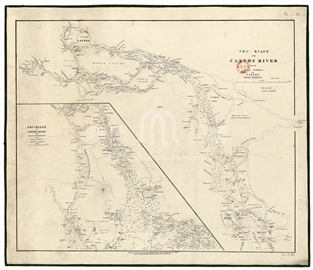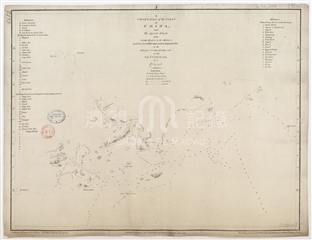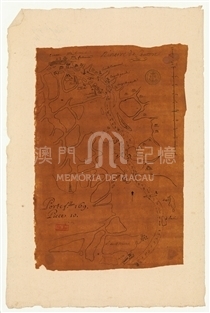This map is the map of Guangdong Province in Martini’s Novus Atlas Sinensis including today’s Guangdong Province and Hainan Province. This map accurately depicts the geographical landscape of Guangdong Province, especially the Pearl River, the coastline and coastal islands. Different symbols were used to denote districts, counties, villages, etc., among which the city of Guangzhou (QVANGCHEV) was drawn as a European castle-style building. On an island in the east of the Pearl River estuary, a church was painted and marked with “Macao”, namely Macao. The symbol of the Jesuits, “IHS”, was dotted in the position of Guangzhou, Nanhung (Nanxiong today), Chaoking (Zhaoqing today), Xaocheu (Shaoguan today). Those symbols indicate that the Jesuit missionaries had entered those cities for the missionary work. Of particular note is that a large shoal was drawn in the ocean east of Leizhou Peninsula; in the sea near the northeast corner of Hainan Island was not only marked “Qixingshan” (Ciexing M.) but also specifically painted the seven islands of varying sizes to represent TayaIslands; further south, the mountains were marked with Duzhu Mountain (Tocheu M.). The information is unusual in the maps drawn by Chinese people in Ming Dynasty. The evidence shows that when drawing Chinese New Atlas, Martini carried out in-depth research, instead of copying from Chinese maps.
This map is copied from Novus Atlas Sinensis (1655 Edition) from the Harvard University Library Map Collection Department (MA 17.60.6 pf ).
Reference:
[1]. Martini, M., & Bertuccioli, G. (2002). Novus atlas Sinensis. Trento: Università degli Studi di Trento.
[2]. 高泳源. (1982). 衛匡國(馬爾蒂尼)的《中國新圖志》. 自然科學史研究, 04期.
Informações relevantes
Data de atualização: 2020/09/09













Comentários
Comentários (0 participação(ões), 0 comentário(s)): agradecemos que partilhasse os seus materiais e histórias (dentro de 150 palavras).